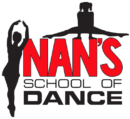5 Elements of Dance | Dance is an Art Form
A painter uses a brush and a canvas. A sculptor uses clay and a chisel. A violinist uses a violin and a bow. All of these artists have different tools, techniques, and skills to create their art form. Dance is no different. A dancer uses their body, actions, space, time, and energy to create their art. In order to be a student of dance- we must learn about the 5 elements of dance and how they combine to form a beautiful artistic expression!
Body
Dance is an art form…of, by, and for the body. A dancer’s tool is their body. A dancer uses all of the parts of their body- arms, hand, legs, feet, torso, head, and even their breath. Dancers manipulate their bodies to create lines, forms, and shapes.
Action
Any movement of the body is an action. These can include leaping, walking, partner lifts, hand gestures, and facial expressions. Dance is made up of streams of movement and pauses, so action refers not only to steps and sequences but also to the pauses and moments of stillness. Actions can be done in two ways.
- The body in one place- Stretching, bending and twisting can be done with the body in one place.
- The body in movement- Running, rolling, and twirling are done as the body is moving.
Dancers movements can be choreographed- planned and taught by a teacher. Or they can be improvised- made up “on the spot.”
Space
Dancers interact with and occupy space in a variety of ways. They can use a small amount of space. Or they can occupy a large area of space with their bodies and movement. Dancers can engage with space in different levels- they can be high, medium, or low. Dancers can move forward and backward, side to side or diagonally through space. The lines that dancers use can be straight or curved, they can also be small lines or large extended lines.
Time
Dance can have structured rhythms and pulse that are important to time. Dance is naturally rhythmic in that it can alternate between movement and rest.
Dance movements may show different timing relationships:
- simultaneous or sequential timing
- fast or slow speed
- dance can be brief or long
- dance has a beginning, middle, and an end
Energy
Energy is about how the movement happens. Energy helps describe how a dancer is moving. The dancer can be moving forcefully or gracefully. Energy also helps us identify the emotions or the intention of the dance. A dancer can use light and delicate movements to convey a message or they may use hard, fast, jerky movements to convey a different message. Energy may change in an instant, and several types of energy may be used at once.
So Why Nan’s School of Dance?
We believe that dance is a beautiful art form that merits studying. We offer instruction in Ballet, Tap, Jazz, Contemporary, Hip Hop, Acro, and Pre-Dance, at all levels. These classes will provide your child with important skills as well as educate them on the 5 elements of dance. When your child attends Nan’s School of Dance they will become a student of dance and an artist!
Don’t forget to register!
From ballet to hip hop, we offer dance classes for ALL ages and skill levels in a variety of styles. We place students in classes that will challenge them while offering a fun atmosphere for learning and growth. We also offer Mommy & Me classes, (18 months – 2.5 years)
Register online or give us a call at 919-803-6044 to hold your spot!
